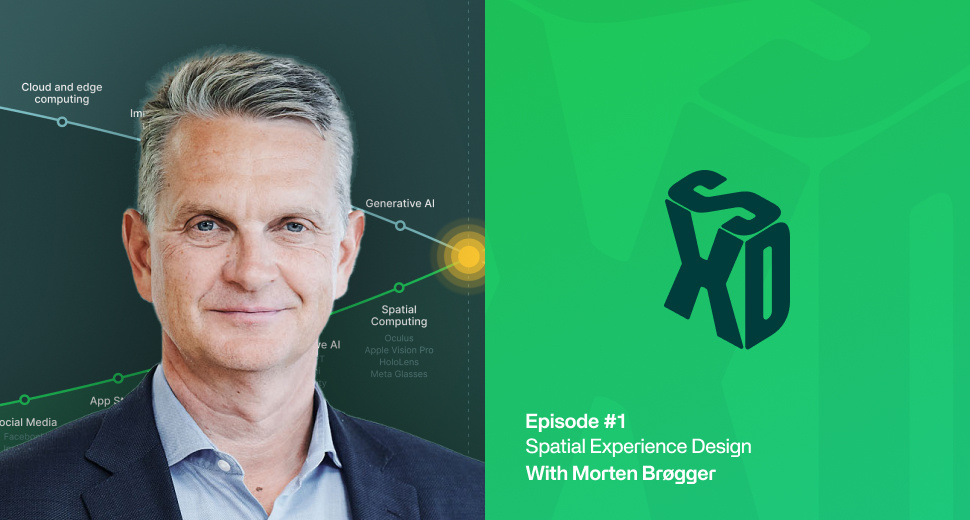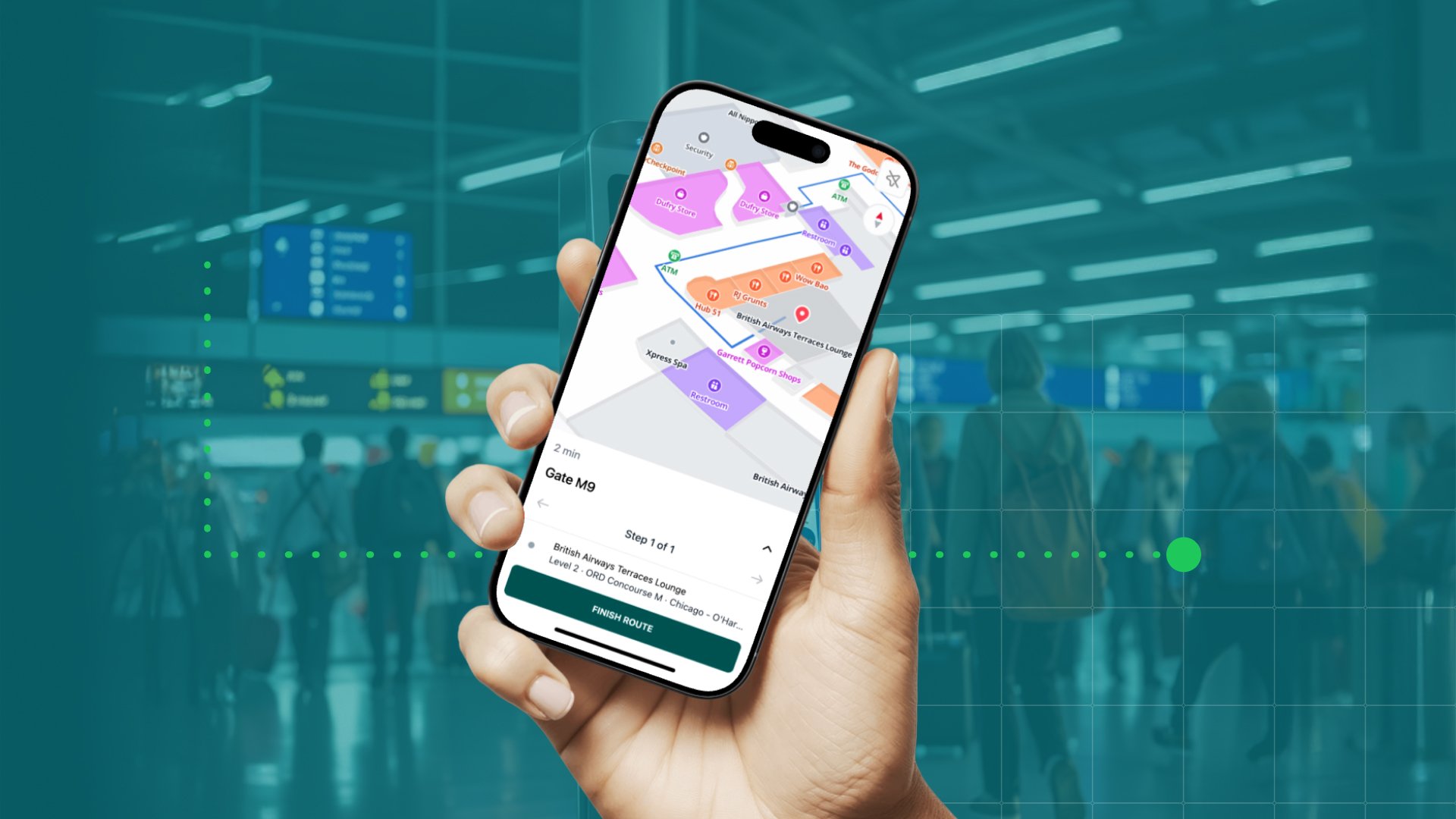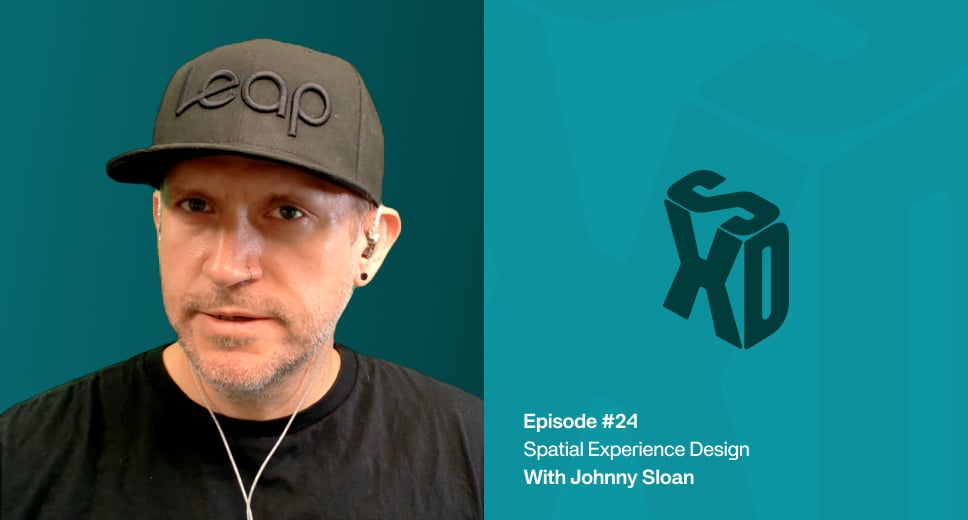In this first episode of Spatial Experience Design, host Søren Vaso and MapsPeople CEO Morten Brøgger explore the intersection of rising user expectations and decreasing technology costs. Discover how advancements like AI, IoT, and spatial computing are reshaping experiences in workplaces, events, and beyond, as we approach a transformative inflection point. This is the one tech shift you can't afford to miss in 2025.
Key Topics:
-
- The convergence of rising expectations and affordable tech
- From static maps to interactive 3D environments
- AI and IoT’s role in personalized, real-time experiences
- 2025 as a pivotal moment for technology adoption
- Real-time data, dynamic mapping, spatial computing
- AI-driven personalization and interoperability
Additional Resources:
Video Transcript:
(Morten) Expectation and complexity for this digital experience is fundamentally increasing every single day, right? And that is an exponential curve. On the other side, the flip side of this coin, is that some of the same technologies is actually driving down cost and speed of how this can be delivered.
(Søren) Hello, dear listener, and welcome to Spatial Experience Design. My name is Søren Vasø and I'll be your host in us trying to explore a new area of everything that goes on inside buildings and with experiences.
So I have my CEO with me today, Morten, and what we want to do is take a path down memory lane and look a bit into the future of what is actually happening, because right now we are in a transition period, I think we can call it, of what is actually happening in the space of mapping, of data, of buildings, of experiences and everything is kind of merging together right now where we get a lot of requests of how we actually can prepare ourselves for the future and all the new options that we have regarding helping users and visitors and employees to create better experiences for them.
And that's what this show is about, trying to figure out that path with you, dear listener, of figuring out where are we actually going right now, whether we are in employee experience, fan experience, visitor experience, or whatever it could be. How can we design better experiences in the future with all that technology and data that we have at our fingertips today? So, Morten, welcome to the show.
(Morten) Thank you, Søren. I'm glad to be here.
(Søren) To give everyone listening to this more context to what I just said, I would like for you as a couple of years in now into this space of telling them a bit about what has actually happened, how does it look, and what is the changes that are going on?
(Morten) Yep, absolutely, I can try that. So, as you said, I joined about a couple of years, ago and I found this area to be super interesting in IT and utilizing our buildings better and using them a better experience, right? And already by using that word and the same word you are using, we already like a little bit into the future.
Let me try and perspectivize that a little bit because only two years ago, different applications were called different things and they have new names already today. For instance, when it came to what you just mentioned as employee experience, two years ago, that was desk booking and meeting room booking. Then it became, like, employee engagement, and now it's already employee experience, right? So when we use the word experience, it's because we are already in the future, one leg in the future. That's you as a marketing person, you're already in the future. And I think that's the perfect place for you to be, right? But it tells a lot about what's happening. Because that sets a lot of changes, right? You have a lot of vendors in the marketplace now, and they are making fan experiences. They're making travel experiences. They're making visitor experience. They're making employee experience applications. Two or three years ago, you didn't have that marketplace today, and that means that evolution was actually going slower.
Now you have a lot of competition. You have a lot of new technology, AI and other technologies. And that is driving that evolution up in pace to a whole different set than it was just a couple of years ago. And that is because all of us is expecting something different also when we are inside a building, right? And I can show you a couple of slides because I think that, that explains very much what it was. Not too many years ago when we talked about visualizing something in a smart building application. We had a floor plan. This is a floor plan of an office, and it was shown in 2D, and you could do a lot of things. It would be geo-referenced, and you could do wayfinding, and you could do positioning of the person, and you could click on things here. But it was a fairly static 2D floor plan of a building.
(Søren) Let me just jump in here because if you're listening to this on audio, I'll make sure that you don't miss anything visual that we actually talk about here. And If you're missing it and you want to see all the graphics, go to YouTube. The show is on there.
(Morten) Yeah, Søren. But again, this, this, this was not too many years ago, this was like how you visualized a floor plan in a building, in some kind of smart building application. Right?
(Søren) Yeah.
(Morten) 3D interactive maps. So you have a whole different end user experience. It looks way more accommodating, it's easier to see, it's easier to recognize, you will be able to rotate this, you'll be able to make it in whatever companies' logos and colors, and it's very dynamic, right? You can hover over things, and you can book things, and you can see status of things.
So this is what fundamentally already happened, right? But the future, as I said, is already overtaking this, because there is a new era coming, and that is basically driven by these kind of experiences and how we use devices today, right? For instance, please book me a desk with two monitors near my meeting with Søren tomorrow at 10:30. That's an instruction you're giving, and you're not actually looking at a map, but someone needs to know where Søren is. Someone needs to know where I am, and where the next meeting room and desk is for this or another example. Morten, please leave now if you want to be in time for your meeting return, or please leave now if you want to be at your flight gate when boarding begins. So these are different things that is fundamentally coming.
This changes the way we experience how we're inside a building and how we interact with the devices that these applications work on and how they're fundamentally interacting with you. And that's driven by all these different things here, right? We all know the, you know, the Siri, the Alexas. We've seen the AI glasses as well. We've seen that the phones and the cameras are becoming way more interactive. We can dictate emails and SMSs and stuff like that. And now we have ChatGPT as well. All this way of how we interact with our devices, our phones, probably still the most predominant interactive device we have, is fundamentally setting a set of requirements at the end-user on how we want to use these applications, because whatever we have when we are at home or when we're outside or whatever, we want to experience the inside world in the same way. So this is driving a different set of expectations at the end users, right? This could be the airlines or the airports end users. It could be the employees of the company or organization you work for. How do they experience these applications?
So, in a way, to fundamentally put a little perspective on this one, we drew this graph a little bit and it's saying a little bit of the same things, right? There's a lot of technology components that has been put in place, right? Smartphones like, always connected social medias. Yeah. A lot of new apps that is in there, like variable devices that you can interact with and it's communicating with everything it has to do together. AI coming into this one. And now we have this whole spatial computing that Gartner says is one of the most interesting things in the next coming years, right?
So, expectation and complexity for this digital experience is fundamentally increasing every single day, right? And that is an exponential curve. It's driven by all these kinds of technologies like smartphones, one of the most predominant one – we always have it. It's always close to us. If it's not close, we get anxiety about it, right?
It's always connected how we use social media, how we access different applications all the time, how it communicates with all. Different variable things, how AI is adding into this one. And one of the next trends is fundamentally spatial computing. Gartner says it's going to be one of the next big things. How is all that stuff interacting, is fundamentally driving up these expectations and the complexity for these digital experiences.
On the other side, the flip side of this coin, is that some of the same technologies is actually driving down cost and speed of how this can be delivered. So we have the same kind of megatrends that is driving up expectations to the end users while actually also driving down cost and speed of how that can be delivered to the end customers. And that's where I see is a super interesting part. I feel that 2024, 2025 is this interaction point where those two curves are crossing each other. And that's when things will start actually moving extremely fast. New technologies, new experiences, new ways of delivering that experience to make sure that we always live up to these expectations for a good experience. Also, when you're inside, whether you're a traveler, a guest, an employee, or retail shopper.
(Søren) Yeah, I think what's really the key takeaway here is that we have a lot of technology trends and it's both driving something up and it's to lower something. And that inflection point that we have mapped out here is, when the lines cross each other, opens up for opportunities we never had before. And that's what this show is, about. Spatial experience, as we have dubbed it, because we don't know what else to call it right now. We have a whole new way of looking at the problem of serving people with experiences, not just solving that task. We have a whole new set of technologies we can use to integrate into our tools. And that inflection point is what we want to discover here of saying, how does this look? And that's why we need to think differently about: How do we design these experiences? How do we design a product? How do we make sure that we actually know how everyone we serve inside the space wants to be served? How they are using their day-to-day stuff? We have a lot of interesting guests coming up that is going to help us understand the space of what they're actually doing today.
A lot of our partners, I have a lot of our internal people I want to interview about, but this graph is really what this show is about. Let's figure out this together of the spatial experience. Where do we actually go from here? And what do we need to change to catch up to the the trends that is already in and has happened. And when is this inflection point being so critical for you to actually understand and solving your business? So you need to change your strategy and how you look at the problems that you're actually trying to solve today.
(Morten) You're absolutely right, Søren. It's going to be super interesting, right? And I know some of the speakers who's coming on and they have new technologies. This is not just like the technology from our company, but it's a lot of the technology from our partners. And it's actually like, really, really interesting to see what it can be done. So I'm excited to see some of the future episodes of this. I can promise you that.
(Søren) Yeah. Let's Go. Thanks for listening to the first episode of Spatial Experience Design and see you later.
January 28, 2025



.png)